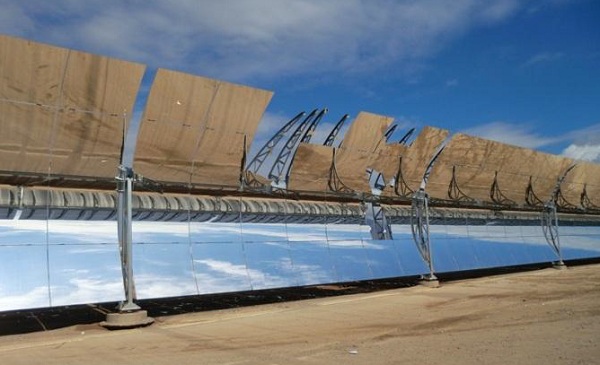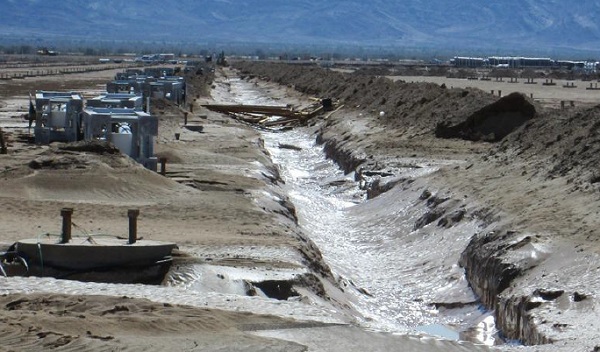Wind-whipped downpours in late July at the site of an under-construction government-backed utility-scale solar project in the desert of southeastern California caused extensive damage, according to preliminary documents released by the California Energy Commission.
An inspector from the commission, in an email included among the documents released, said estimated damage to NextEra Energy’s Genesis Solar Project was $3 million, and said work on the project would be delayed about one month.

In an Aug. 7 email – a week after the July 30 and 31 rains – Mike Conway wrote: “Things are actually pretty good after the storm, they were back to work yesterday. 90% of the problems were related to earthen berms they constructed for temporary access. The berms caused most of the flooding and severe damage. The channels and dissipation structures worked as they were designed.”
The storm toll did include damage to some 195 mirrors on the parabolic troughs the power plant will use to collect the sun’s energy.

NextEra had told KCET ReWire’s Chris Clarke, who broke the story of the flood, that the damage would amount to less than $5 million and would not delay the opening of the plant. The first of two 125-megawatt units is supposed to go online in mid-2013, with the second unit to follow a year later. Power from the project will go to Pacific Gas & Electric.
Parabolic trough plants like Genesis Solar capture and concentrate sunlight to heat a synthetic oil, which then heats water to create steam. The steam is then fed to an onsite turbine-generator to produce electricity.
The Genesis Solar Energy Project received a partial guarantee from the U.S. Department of Energy for an $852 million loan in September 2011. The project had been approved under the Obama administration’s fast-track process for renewable energy development on public lands.
The havoc raised by the storm might on the surface be taken as a sign that the power plant could be vulnerable to powerful weather events. But the company suggested that wasn’t the case; in its report to the Energy Commission, it blamed the damage on the incomplete state of the construction and the freak nature of the storm.
“It is noteworthy that the rain event on July 31 was a 100 year storm event,” the company said. “It is also noteworthy that this 2 day storm that started Monday (5.6-6 inches over the 2 day period) occurred during construction where foundations, fencing, major equipment deliveries, and other temporary construction activities were ongoing and not complete per the design.
“The design has been reviewed and no significant issues have been identified. The damage is due mainly to the incomplete state of construction. Minor tweaks are being evaluated, to assure that a proper design is placed in service.”

The reports from the company provided some insight into the environmental issues that solar developments in the desert face. “On 7-31-12, at about 9:30 AM, Genesis site management was informed that the tortoise fence on the north side of Unit 1 was down,” the company wrote in one instance. “The Contract Managers were contacted immediately to get crews in place to repair fence when the rain cleared.”
Then there were the toads.
“Two couch’s spade foot toads have been found in the southeast corner of channel D,” NextEra reported. “It was verified with picture and sound. The Designated Biologist captured both and relocated them to the Ford Dry Lake Bed.”